Your gums do more than frame your teeth—they provide the essential foundation that holds your smile together. At WeSmile Dental, our gum disease treatment services help you address early signs of infection, halt progression, and rebuild lost support, all under one roof.
If you’re experiencing bleeding gums, persistent bad breath, or gum recession, don’t delay. Early intervention is critical to preventing long-term damage like tooth loss or bone deterioration.
Gum disease, or periodontitis, is a bacterial infection that damages the gums and supporting tooth structures. It often starts as gingivitis—mild inflammation with redness, swelling, or bleeding—that can progress, causing gum recession, bone loss, and eventual tooth loss. Because it develops slowly and may be painless, regular dental check-ups are key for early detection and prevention.
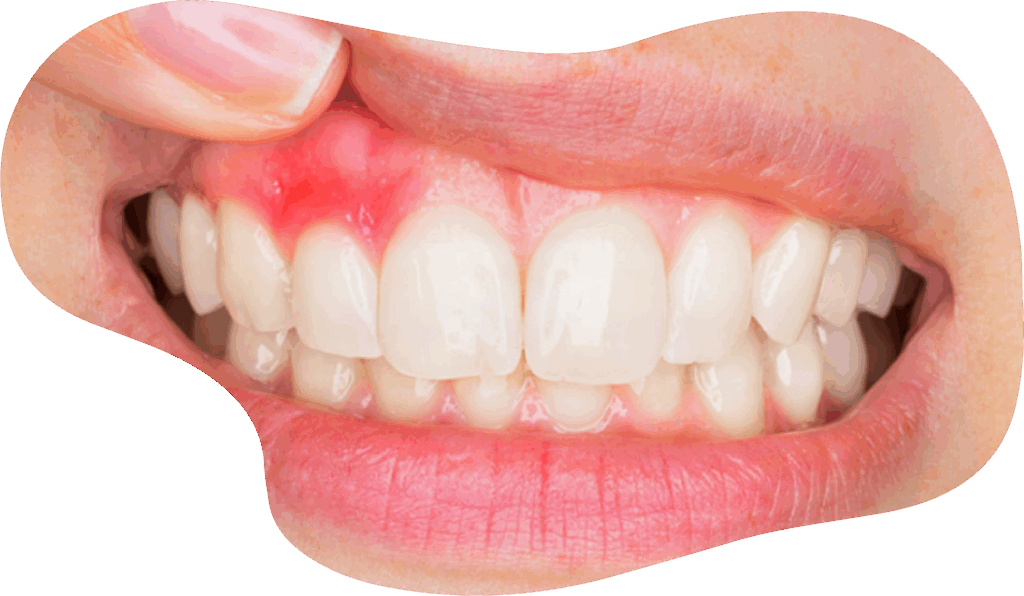
These common factors may increase your risk of developing gum disease:
Made from high-quality dental porcelain that mimics the natural translucency and texture of enamel.
High blood sugar levels can impair healing and increase infection risk. Hormonal fluctuations during puberty, pregnancy, or menopause can make gums more sensitive to plaque.
Ongoing stress can weaken your immune system, and some medications (like those that reduce saliva or cause gum overgrowth) may worsen gum health.
If gum disease runs in your family, you may be more prone to developing it—even with good oral care.
Conditions like lupus or Crohn’s disease can inflame tissues, including gums. Diets low in essential nutrients, especially vitamin C, can also slow healing and increase risk.
Professional gum treatment provides far more than temporary relief. It plays a crucial role in maintaining your overall oral health and preventing serious complications. Here’s how timely treatment benefits you:
Gum disease is a leading cause of tooth loss in adults because it attacks the supporting bone and tissues. Early and effective treatment stops the progression of infection, preserving the jawbone and keeping your natural teeth firmly in place.
Ongoing gum inflammation not only damages your gums but can also affect your overall health. Professional treatment targets harmful bacteria beneath the gumline, reducing infection and inflammation to restore healthier tissues.
Gum disease can cause gum recession and uneven gum lines, affecting your smile’s appearance. Treatments such as gum grafting and contouring help rebuild lost tissue, improving both function and aesthetics for a more confident smile.
By thoroughly removing plaque, tartar, and bacterial toxins, gum treatment creates a cleaner oral environment. This supports better oral hygiene practices at home and reduces the risk of future dental problems like cavities and periodontal disease.
Addressing gum disease early can prevent severe complications that require complex surgeries or even tooth extractions. Timely treatment helps you avoid costly, invasive procedures and keeps your dental care simpler and more manageable.
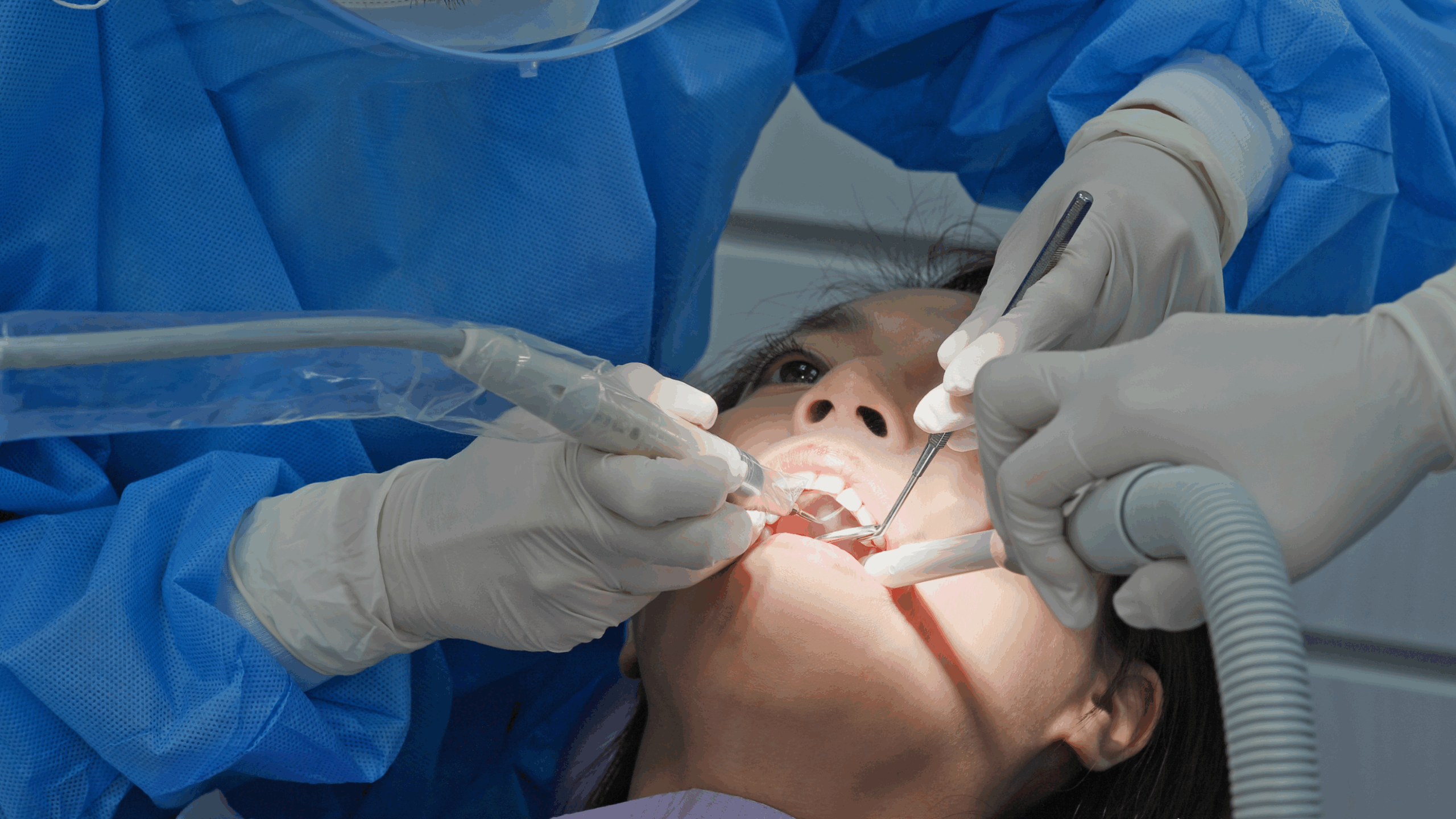
Gum disease, also known as periodontal disease, is primarily caused by the buildup of plaque and tartar on teeth, which leads to bacterial infection and inflammation of the gums. However, several other factors can trigger or worsen the condition, increasing your risk of developing gum problems.
Gum Disease Causes | Gum Disease Description |
| Poor oral hygiene | Plaque and tartar accumulation leading to bacterial infection |
| Smoking or tobacco use | Reduces gum healing and accelerates disease progression |
| Systemic conditions (e.g. diabetes) | Increased susceptibility to infection |
| Hormonal changes | Puberty, pregnancy, menopause can increase gum sensitivity |
| Misaligned teeth / restorations | Create areas that trap plaque and bacteria |
| Age and genetics | Natural predisposition and age‑related changes in gum health |
Gum disease progresses in stages—starting with mild inflammation and potentially advancing to severe infection that damages the soft tissues and bone supporting your teeth.
Without early intervention, gingivitis can develop into advanced periodontitis, increasing the risk of tooth loss. Timely treatment is essential to stop this progression and preserve your oral health.
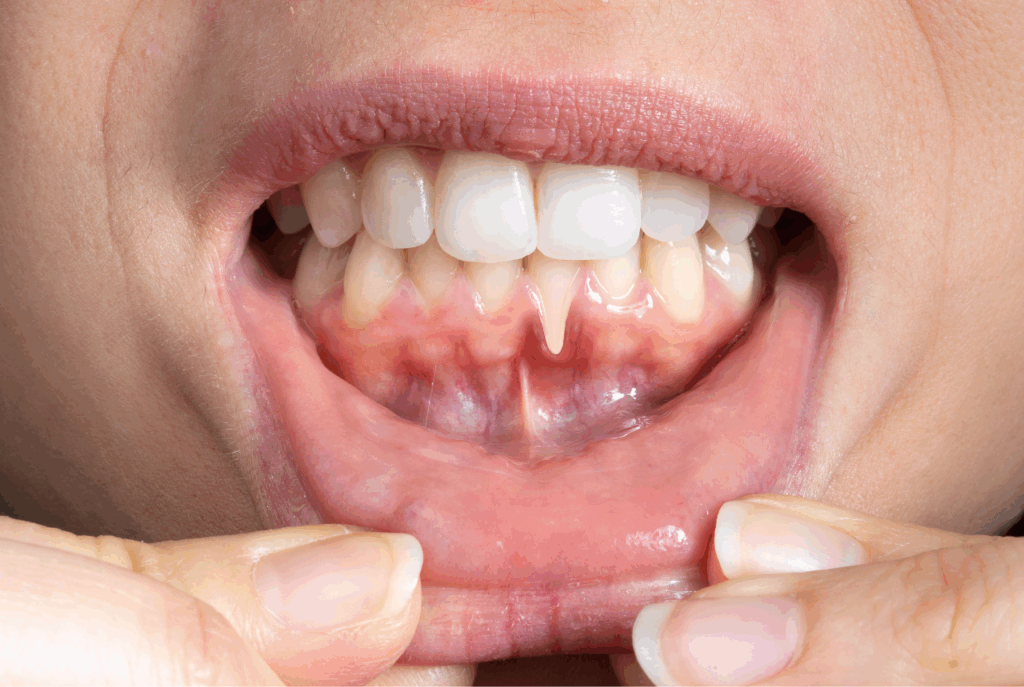
Reversible gum inflammation with bleeding or swelling
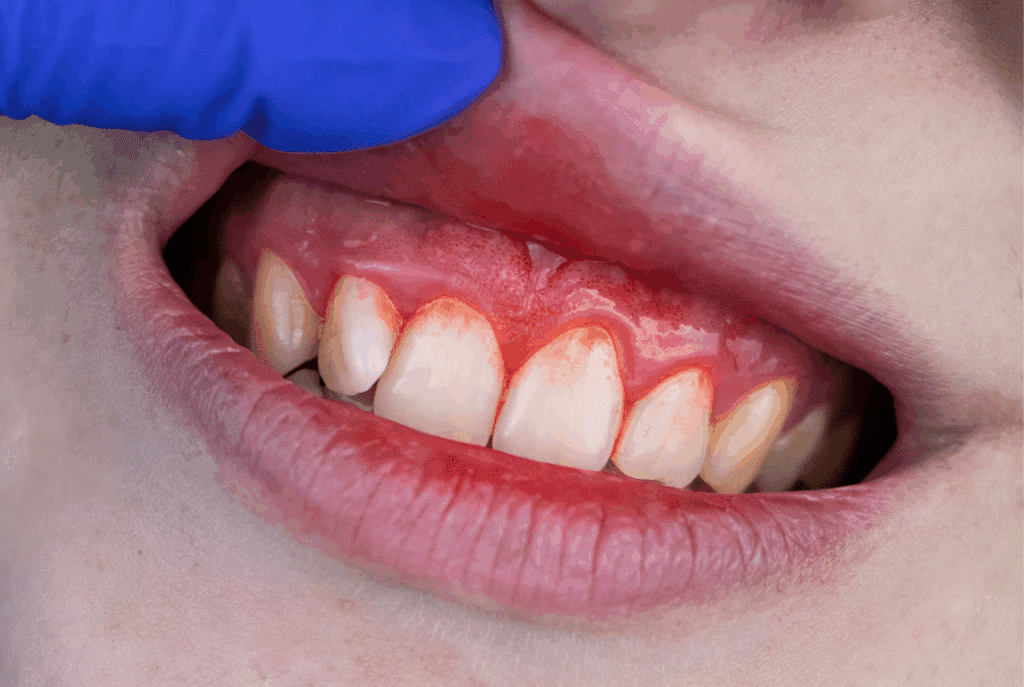
Gum pockets deepen; infection reaches bone
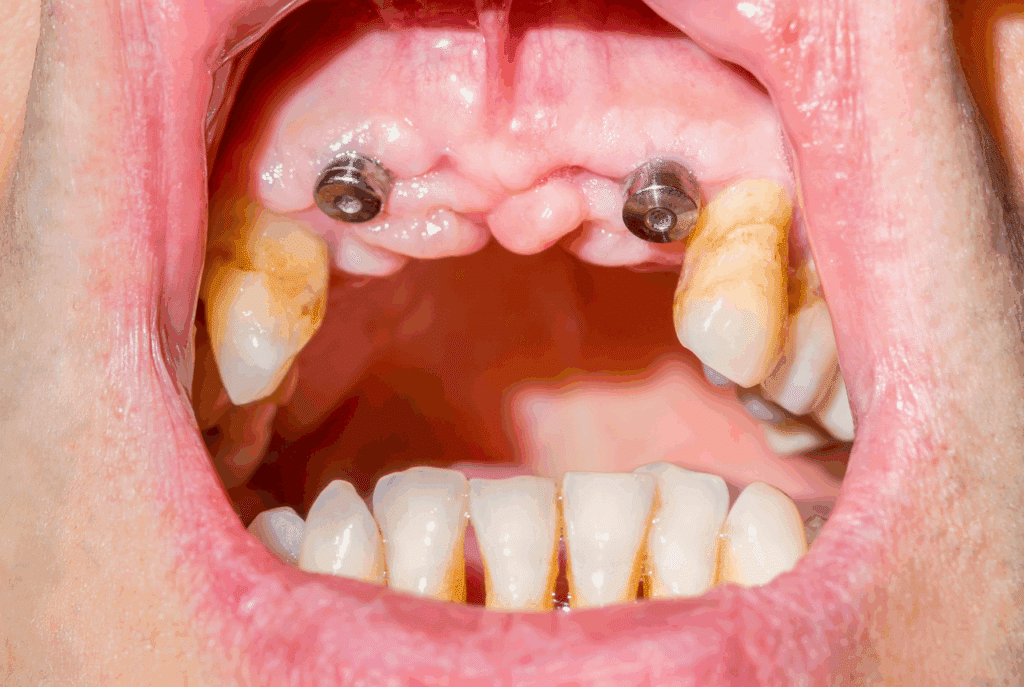
Severe bone loss, loose teeth, receding gums
If you’re experiencing any of the following symptoms, it could be a sign of gum disease—and a prompt gum treatment may be necessary to prevent further damage:
Bleeding when brushing or flossing often indicates gingivitis, the earliest stage of gum disease caused by plaque and bacteria buildup.
Possible Treatment:
Scaling and root planing (deep cleaning teeth) removes hardened plaque and bacteria beneath the gumline, helping reduce inflammation and stop the bleeding before the condition worsens.
Ongoing bad breath or a metallic taste may point to chronic infection in the gums or pockets around the teeth where bacteria thrive.
Possible Treatment:
Bad breath treatment may include professional cleaning, antibacterial rinses, tongue cleaning, and in more serious cases, periodontal therapy to address deeper infection.
Irritated, swollen, or painful gums are a sign of an inflammatory response to plaque buildup—often associated with early or moderate gum disease.
Possible Treatment:
Non-surgical periodontal treatment, including scaling and polishing, along with medicated mouth rinses, can help restore healthy gum tissue and control bacterial inflammation.
If your gums are pulling away from the teeth, exposing the roots, it could be due to aggressive brushing or progressing periodontal disease.
Possible Treatment:
Gum grafting (also known as receding gums treatment) can cover exposed roots and strengthen thinning gums. It helps reduce sensitivity and protects against further gum loss.
Teeth that feel loose or start to move out of position often signal advanced periodontal disease with underlying bone loss.
Possible Treatment:
Surgical gum disease treatments such as flap surgery, bone grafting, or guided tissue regeneration help rebuild bone, stabilise the teeth, and prevent further deterioration.
These are not just surface-level issues—left untreated, they could lead to advanced gum disease, bone loss, and even tooth loss. If you notice any of these warning signs, schedule a dental evaluation as soon as possible.
Treatment depends on the severity and stage of your gum disease. Our dentists provide a full spectrum of both non-surgical and surgical gum treatments tailored to your condition.
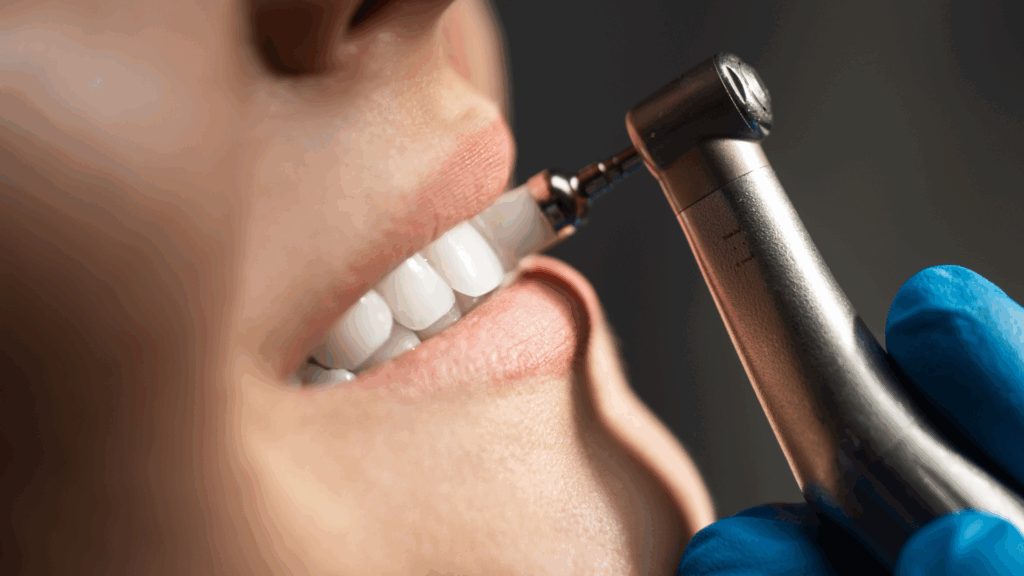
Scaling and polishing is a routine gum disease treatment that removes plaque, tartar, and harmful bacteria from the surface of your teeth and along the gumline. This professional dental cleaning helps prevent the progression of gingivitis and maintains overall oral hygiene, especially when regular brushing and flossing can’t reach certain areas.
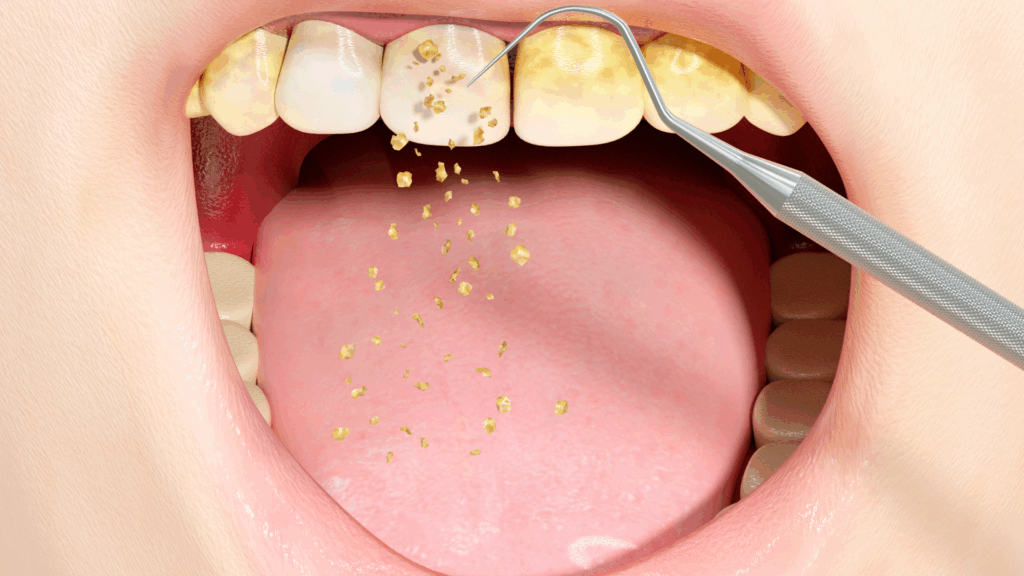
Also known as deep cleaning teeth or scaling and root planing, this procedure targets the areas beneath the gumline. Your dentist carefully removes bacterial deposits and smooths the root surfaces to help the gums reattach more securely. Root planing is highly effective for treating early-stage periodontal disease and reducing gum pocket depths.
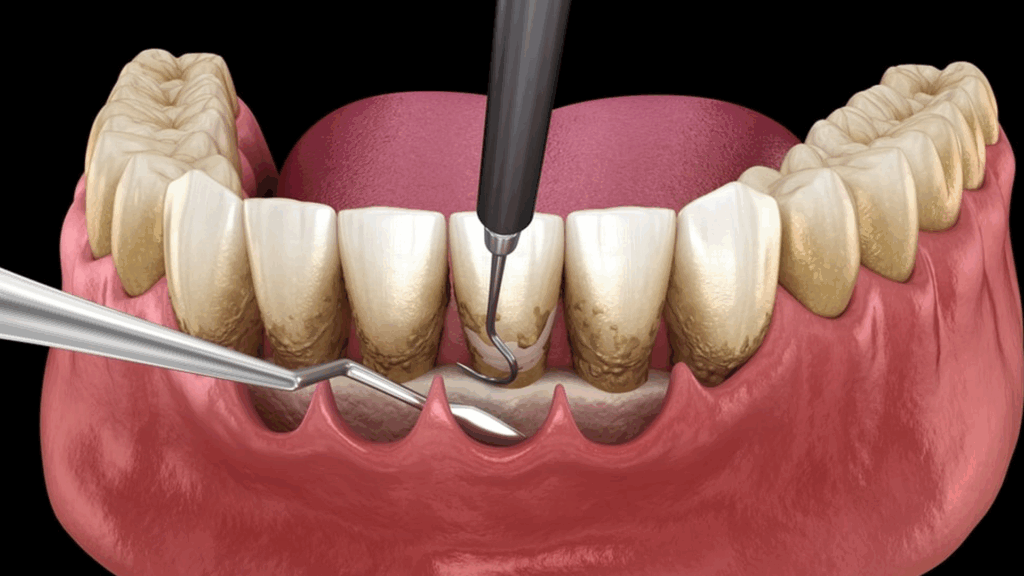
Flap surgery is a more intensive periodontal treatment designed to treat advanced gum disease. The gums are gently lifted to allow deep cleaning of tartar deposits that have accumulated below the gumline. After cleaning, the tissue is repositioned and sutured to support healing and reduce inflammation.
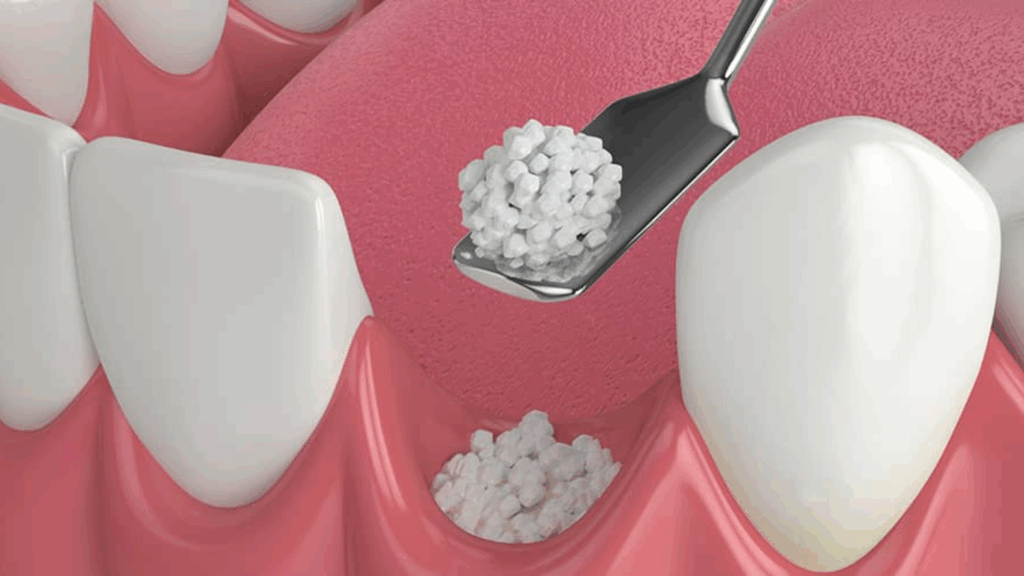
When gum disease causes bone loss around the teeth, a dental bone graft can help restore the lost structure. The procedure uses synthetic, natural, or donor bone material to regenerate bone tissue, providing the necessary support to stabilise your teeth and prevent further deterioration.
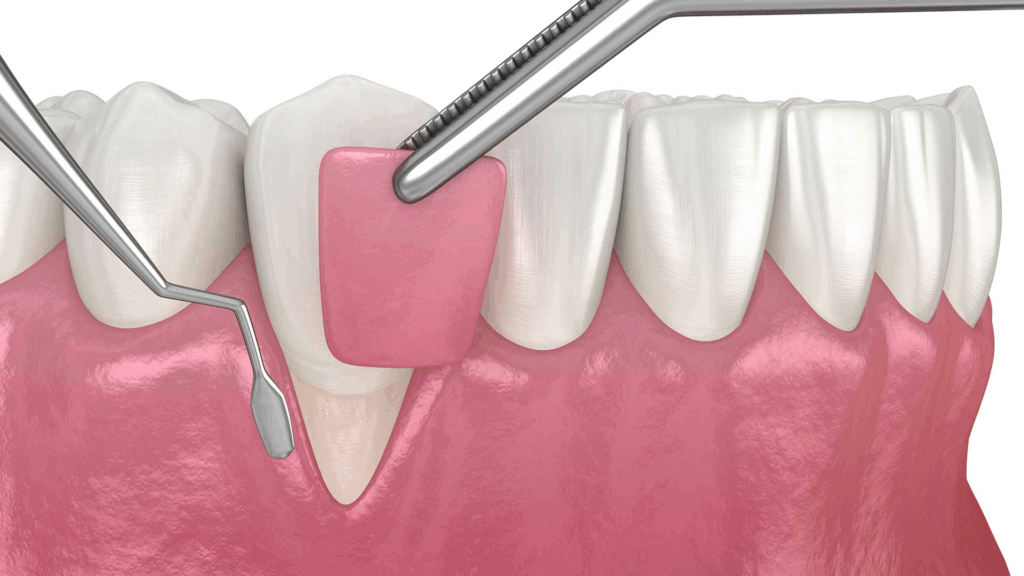
For patients with receding gums, a gum graft or gum recession surgery may be recommended. This involves transplanting healthy tissue—often from the roof of your mouth—to areas where the gums have worn away. The graft helps protect exposed tooth roots, reduce sensitivity, and restore the natural gumline for a healthier smile.
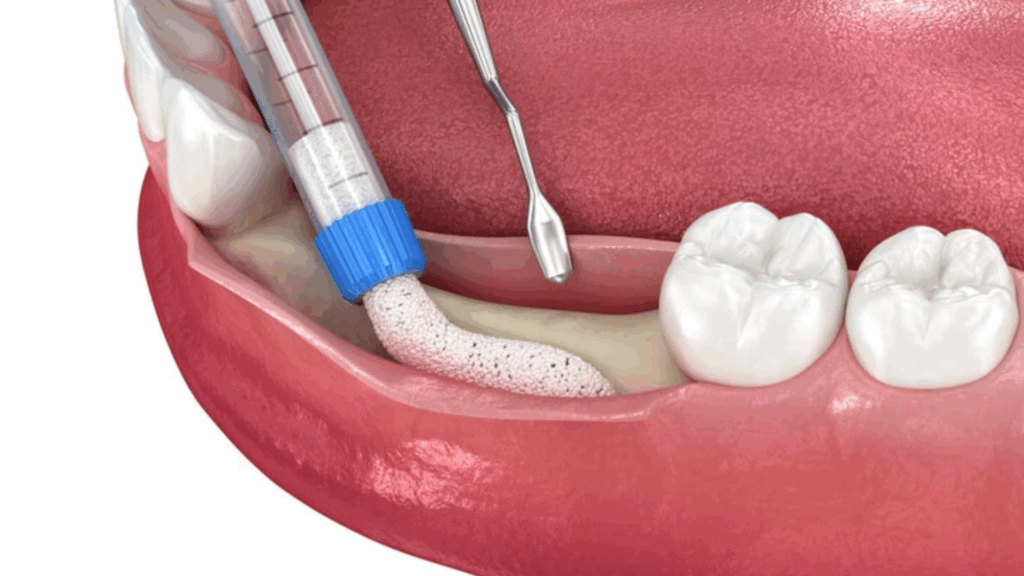
GTR is a regenerative periodontal surgery technique that encourages the growth of gum and bone tissue. A specialised membrane is placed between the bone and gum to block unwanted cell types from interfering with healing, allowing your body to regenerate the supportive structures lost to severe gum disease.
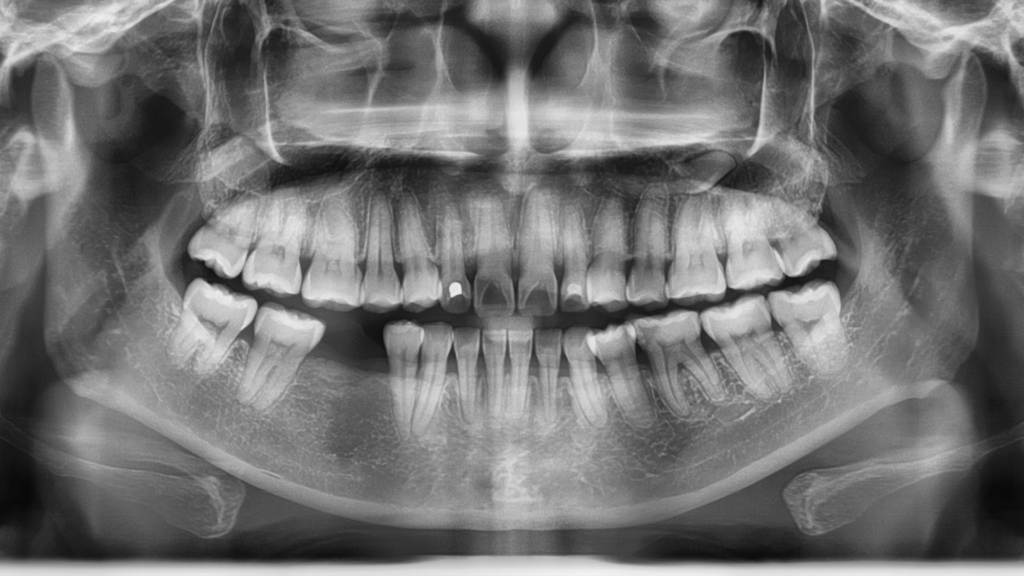
In cases of severe periodontitis, dental bone surgery may be required to reshape damaged bone surrounding the teeth. This procedure eliminates deep crevices where bacteria thrive, helping to reduce infection risk and maintain a stable environment for your remaining teeth.
Gum recession treatment focuses on protecting exposed tooth roots and restoring gum coverage. If left untreated, receding gums can lead to tooth sensitivity, root decay, and cosmetic concerns. At WeSmile Dental, we offer advanced, minimally invasive procedures and new gum recession treatment options to restore both function and appearance.

Understanding the cost of gum disease treatment in Singapore helps you plan your dental care with confidence. Treatment fees vary widely depending on the severity of your gum condition and the procedures needed.
For mild to moderate gum disease, non-surgical treatments such as scaling and polishing and root planing (deep cleaning) form the first line of defense. These treatments are generally more affordable, with typical prices ranging from SGD 100 to SGD 650 per session or quadrant.
If gum disease has progressed to more advanced stages, surgical procedures may be necessary. These include flap surgery to remove deep tartar deposits, gum grafting to repair receding gums, and bone grafting to rebuild lost bone. Surgical treatments tend to be more costly, often starting from SGD 800 and upwards depending on complexity and materials used.
Ignoring gum disease can lead to more severe complications, including tooth loss and costly restorative procedures. Early intervention through affordable treatments not only saves money in the long run but also preserves your natural teeth and overall oral health.
All prices are inclusive of GST.
From
Diagnosis typically includes a visual gum check, pocket depth measurements using a periodontal probe, and dental X-rays to assess bone loss. Your dentist may also review your medical and dental history to identify contributing risk factors.
Yes. WeSmile Dental is CHAS-accredited. Eligible cardholders (Orange, Blue, Merdeka, Pioneer Generation) receive subsidies for treatments like scaling and polishing or root planing. Just present your CHAS card during your visit. Coverage varies by tier, and co-payment may still apply.
Apart from the slight discomfort that may be caused by scaling and polishing (SAP)—which depends on your level of tooth sensitivity and gum inflammation—most gum disease treatments are not painful.
Procedures typically involve local anaesthesia to numb the affected area. Like most dental procedures that use anaesthesia, you won’t feel pain during the treatment itself.
After the anaesthesia wears off, it’s normal to experience some mild tenderness or swelling, which usually goes away within a few days with proper care.
Treatment duration depends on severity. Mild cases may be resolved in one or two sessions of deep cleaning, while advanced cases requiring surgical procedures could involve multiple visits over several weeks. Regular follow-up is key to long-term success.
Yes — gum disease is preventable with good oral care. Brush twice a day, floss daily, and see your dentist regularly. Avoid smoking, eat a balanced diet, and manage health conditions like diabetes to keep your gums healthy.
With early detection and proper treatment, many people can keep their teeth for life—even if they have gum disease. However, if left untreated, gum disease can progress and cause permanent damage to the gums and bone, leading to tooth loss over time.
Regular dental care and good oral hygiene are key to managing gum disease and preserving your natural teeth as long as possible.